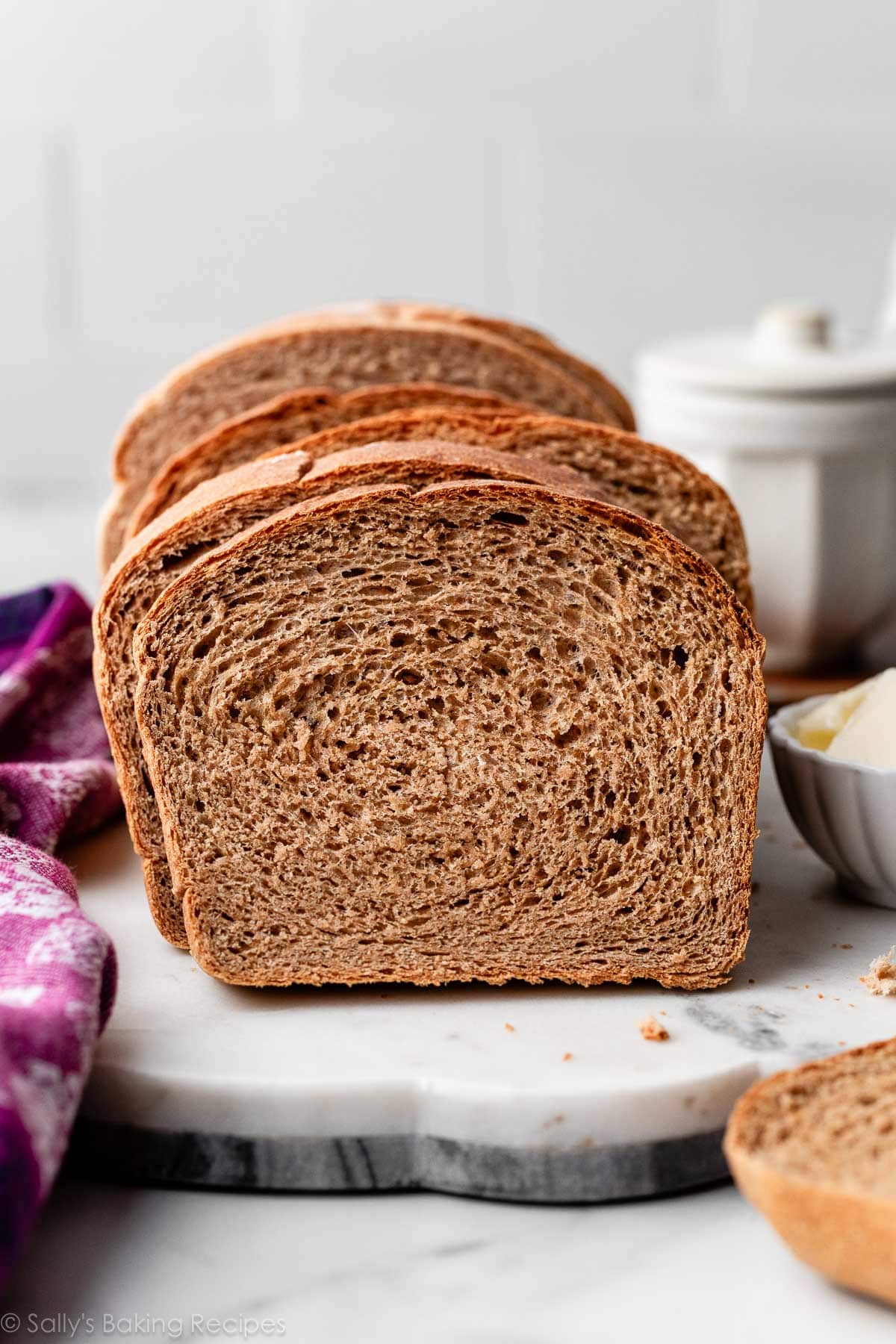How to Knead Dough (Video)
Today I’m teaching you the basics you need to know about how to knead dough. Learn why kneading is an important and necessary step in most yeasted bread recipes, how to do it properly, and how to know when your dough has been kneaded long enough and is ready to rise. In this post & video, I demonstrate 2 techniques I use, which you can use with any yeast dough that requires kneading, whether you’re baking sandwich bread, cinnamon rolls, or homemade pizza.

Despite the delicious taste and alluring aroma of fresh-baked bread, many aspiring bakers hesitate to begin the journey of homemade bread baking. I, too, avoided it for many years. There was just no way I could possible handle a dough with yeast. How scary!
But the truth is that making yeasted bread is a surprisingly simple process, as long as you have reliable, approachable recipes and a basic understanding of how yeast works. (Plus, a little patience!) The hardest part is, truly, finding the courage to just BEGIN.
By the way, if you’re new to working with yeast, reference my Baking with Yeast Guide for simple answers to common yeast FAQs. It’s a massively helpful starting point, and will help give you the base knowledge needed to successfully embark on your bread-baking journey. 😉
Today’s post is an extension of my Baking with Yeast Guide. Here I’m teaching you how to knead dough. Kneading dough is an essential step in bread baking, whether you’re making soft multigrain bread (pictured above), breadsticks, whole wheat bread, gooey raspberry sweet rolls, or flaky dinner rolls (pictured below).
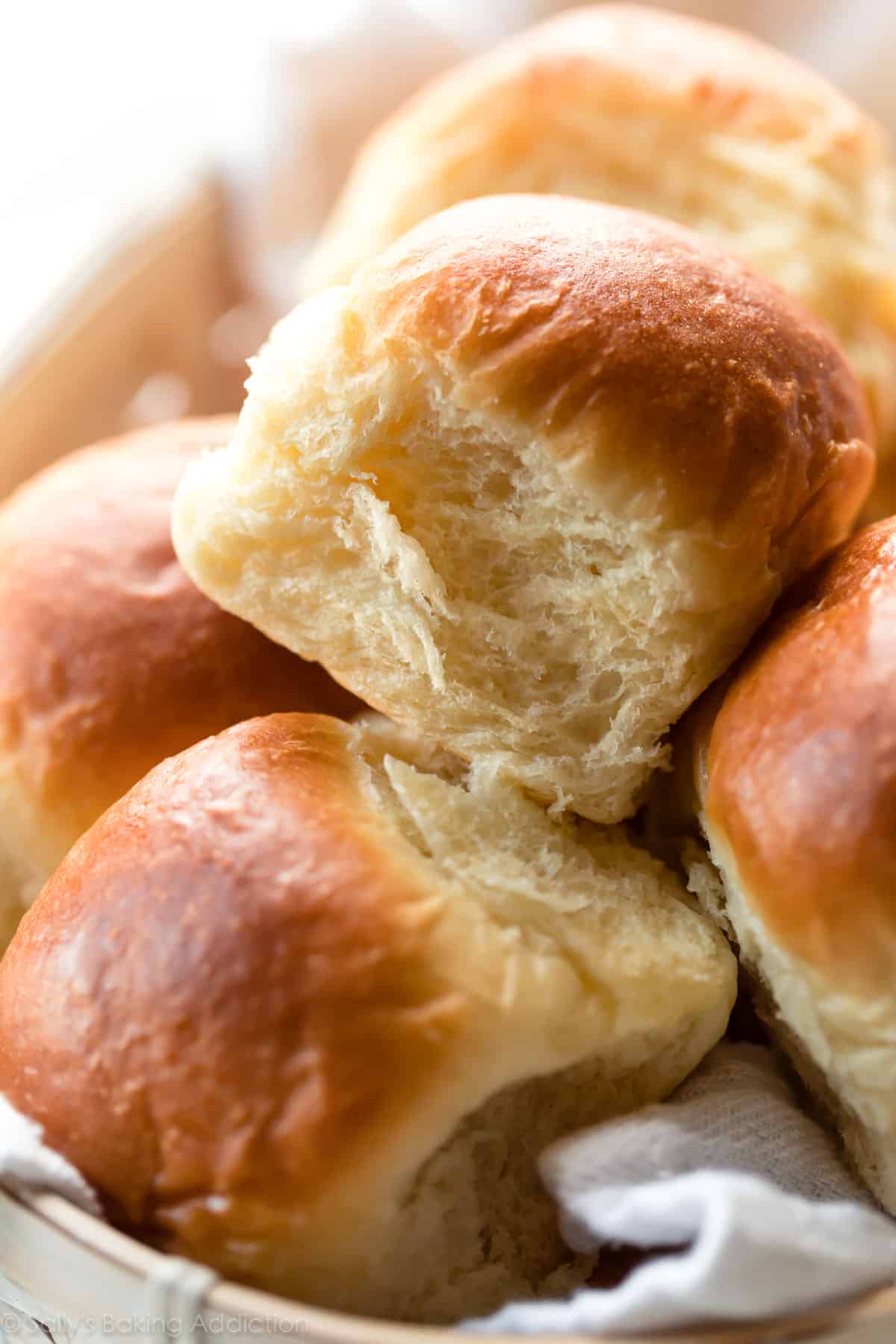
Why Do We Need to Knead?
Kneading serves a couple of purposes.
First, we’re incorporating air into the dough. And second, we need to stretch out the gluten strands to build structure and strength into the bread. Simply mixing the dough together leaves us with a random, disorganized array of gluten proteins. We still have to “develop” the gluten, i.e., encourage the proteins in the flour and moisture in the dough to link together and form a strong gluten network. This structure allows for trapping of gases so the bread will rise up nice and high. And gluten is what makes bread deliciously chewy.
If you don’t knead your dough, your baked bread won’t rise as high, and the overall texture and appearance will be dense. Properly kneaded dough promises a softer, fluffier, taller, and chewier bread.
OK, that’s your science class done for today!
I’ve made yeasted breads before that do not require kneading, and have a few published including this no-knead honey oat bread, cranberry nut no-knead bread, 4-ingredient artisan bread, and this jalapeño cheddar bread. So what’s the difference? Those bread recipes use a very wet dough and a slow-rise method, which allows for fermentation to occur as the highly hydrated dough rests in the refrigerator for at least 12 hours, or even longer.
Comparison Photos
Take a look at the following picture. On the left is a dense, squat, and crumbly loaf of sandwich bread. I did not knead the dough that produced this baked loaf. On the right, I kneaded it as the recipe instructs. It’s the same exact dough, only the left was not kneaded.
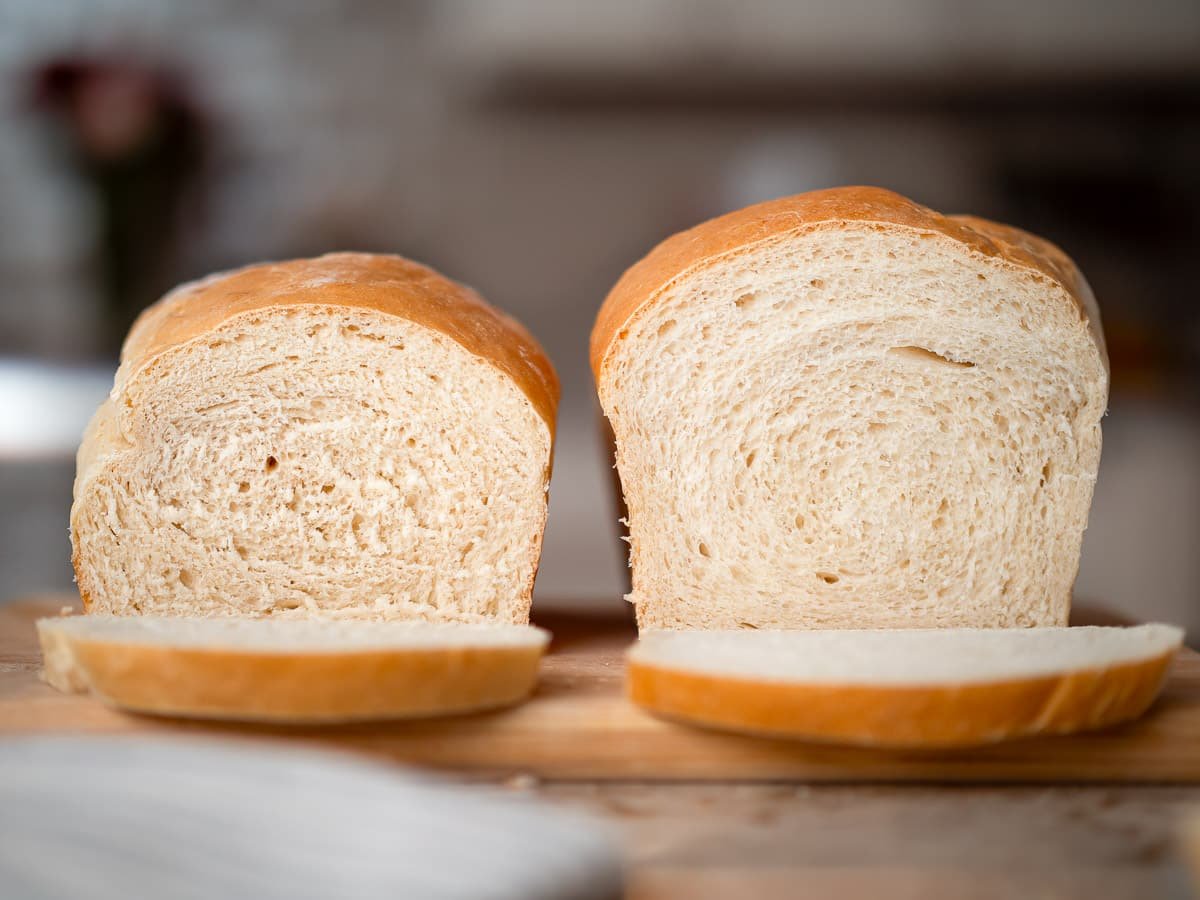
And, below, here is that same “not kneaded” loaf. Because I didn’t knead the dough, it didn’t have the strength to trap the yeast’s gases.
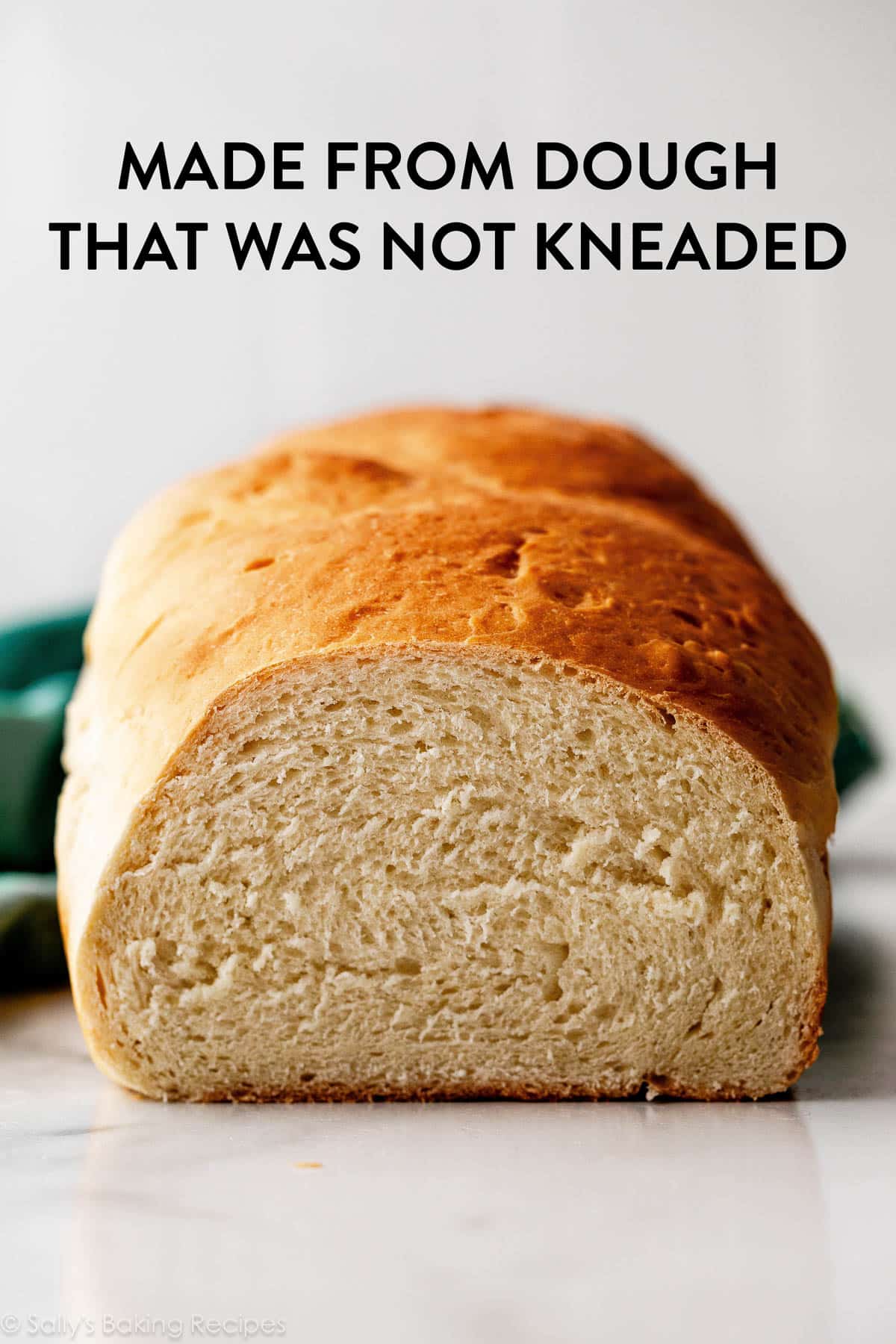
And now, the same sandwich bread recipe, but I took the time to properly knead the dough like the recipe instructs. You can see a MAJOR difference.

How to Knead Dough by Hand
If you have a stand mixer with a dough hook attachment, you can let the mixer run on low speed and the dough hook can do the kneading, which makes the job hands-off; but I much prefer to knead dough by hand, for several reasons:
- Some doughs can be really heavy, and might be too much for your mixer to handle.
- Letting a stand mixer do the work can potentially lead to over-kneading the dough. It’s a lot harder to over-knead dough with your hands, because you get a good feel for the dough, and will notice as the texture changes. And also… you would likely get very tired before you reach that point!
- And of course, kneading by hand is a great stress reliever—give it a try!
If you decide to knead the dough by hand, here’s how to do it: Using the heels of your hands, gently push the dough away from you in a rocking motion, alternating hands as you go. You want to put some energy into it, to really stretch out the dough.
Video Tutorial
As you can see in the video, after you’ve mixed together all of your dough ingredients, it’s kneading time. Here’s everything you need to knead:
- Clean hard surface, such as a countertop or a large cutting board.
- Small dish of all-purpose or bread flour, aka “bench flour.”
- A bench scraper is a useful tool to have on hand; if the dough is sticking to your work surface, just scrape it off with a bench scraper and then add a little more flour to the surface.
Success Tips
- Don’t add any more flour than you really need—use just enough to prevent it from sticking too much to your hands and work surface. The dough should still feel a little tacky.
- If the dough starts sticking to your hands, add a little more flour to your hands, rather than to the dough, so you don’t throw off that careful ratio of ingredients in your bread recipe.
- As you knead, you’ll start to feel the texture of the dough change; it will begin to smooth out and feel softer and more elastic.
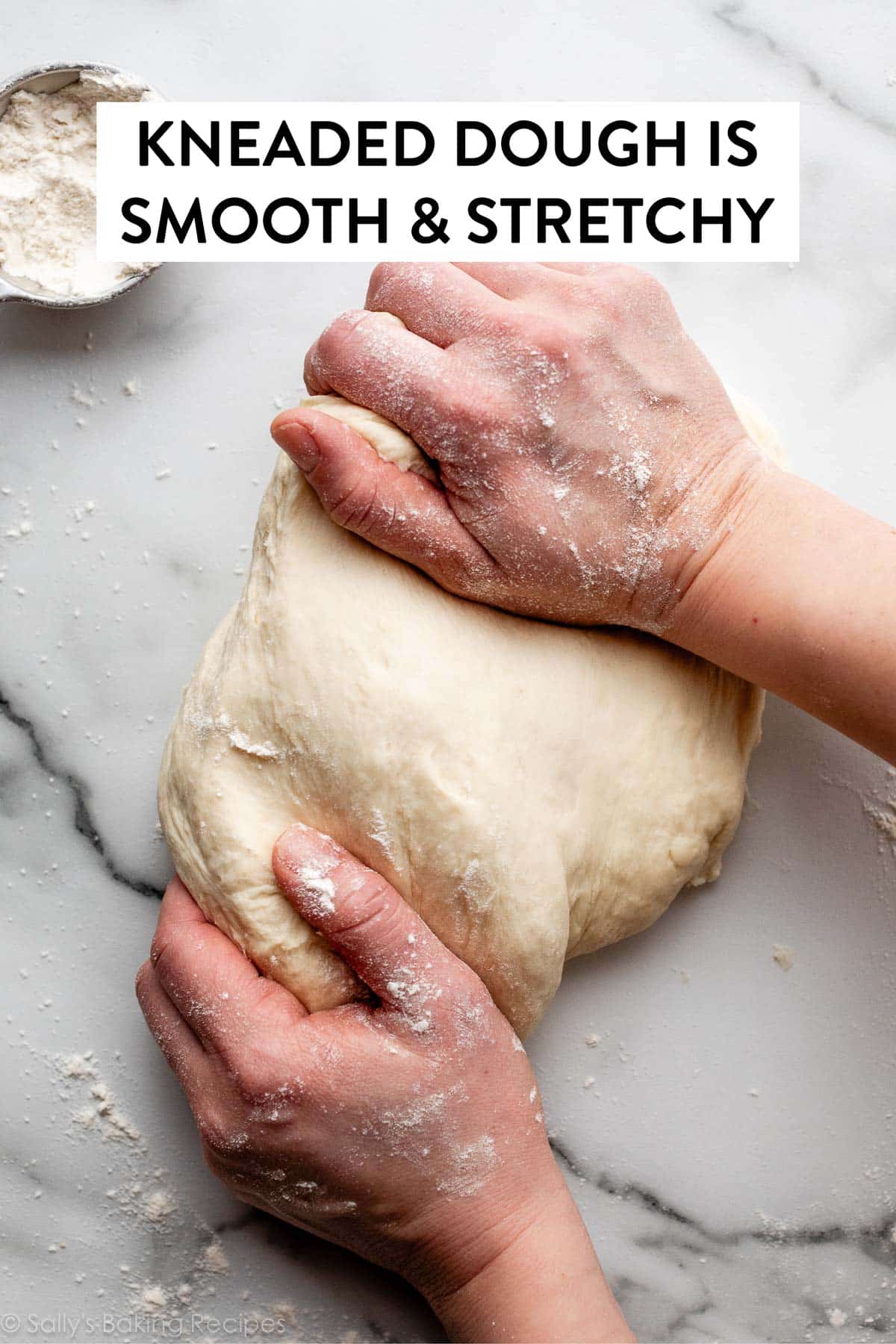

How to Knead Extra-Sticky Dough
If you have an especially soft or sticky dough, there’s another kneading technique you can use. I use this method primarily with extra-soft rich doughs, such as my overnight cinnamon rolls. Rich doughs have more fat in them (for example, milk, butter, and egg), as opposed to lean doughs like pizza dough and homemade bagels.
With the heel of your hand, push the dough out, then fold it back. Give the folded dough a quarter turn, and repeat. Push it out, fold it back, and turn. This method is a little more gentle, and I find it works better when you have a particularly wet, sticky dough. You can watch me do this in the video above.
How to Know When Dough Has Been Kneaded Enough
How do we know when the dough has been kneaded enough and is ready to rise? I have two ways you can test your dough for doneness:
The first way to check is to simply poke the dough with your finger. If the dough bounces back without sticking to your finger, it’s been kneaded enough. If it doesn’t, you need to keep kneading.
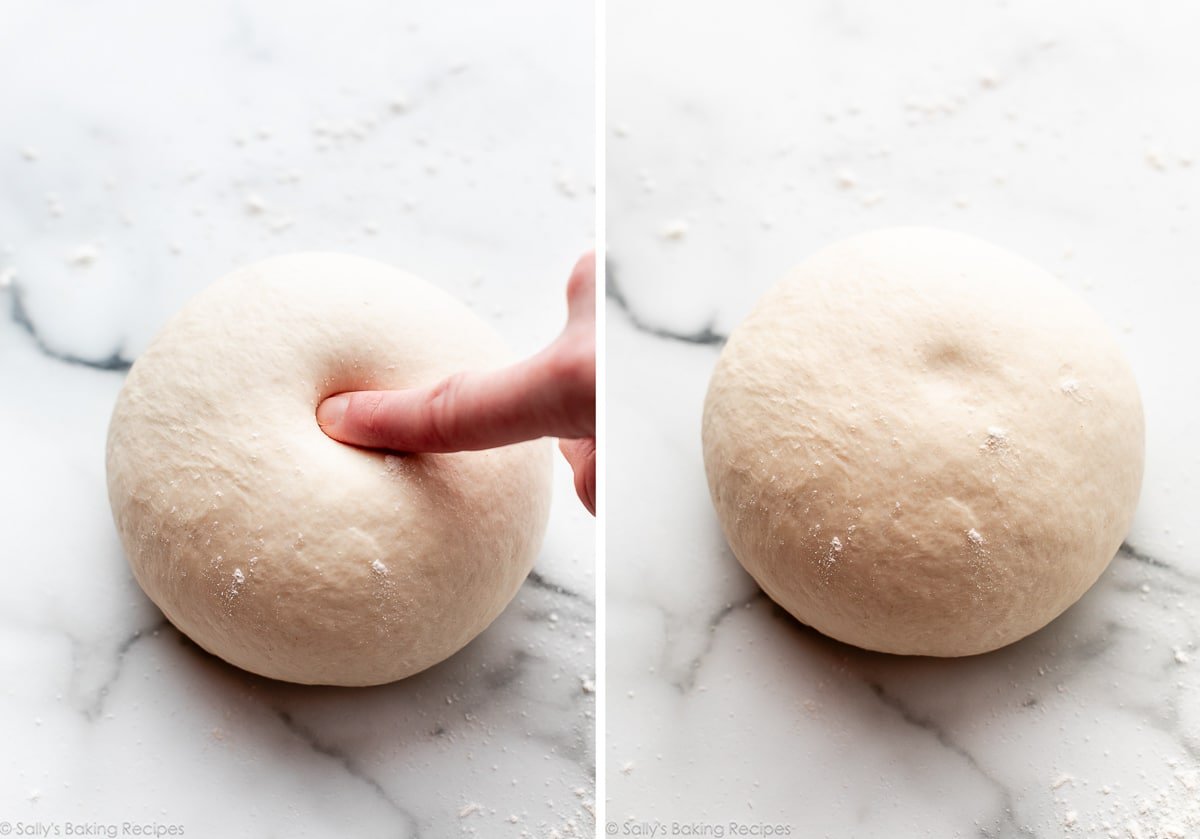

Windowpane Test for Dough
The second way to check if your dough has been kneaded long enough is something called the windowpane test. Tear off a small piece of the dough, and stretch it out until you can see some light coming through it. (Just hold it up to a light or a window.) If the dough tears before that point, then you need to keep kneading for a bit longer.
Kneading length varies greatly in yeast bread recipes. Some doughs take just 3–5 minutes, while others can take up to 10–15 minutes. For those longer knead times, if your arms are getting tired, feel free to pop the dough back into your stand mixer and use the dough hook for a few minutes to give your hands a break.
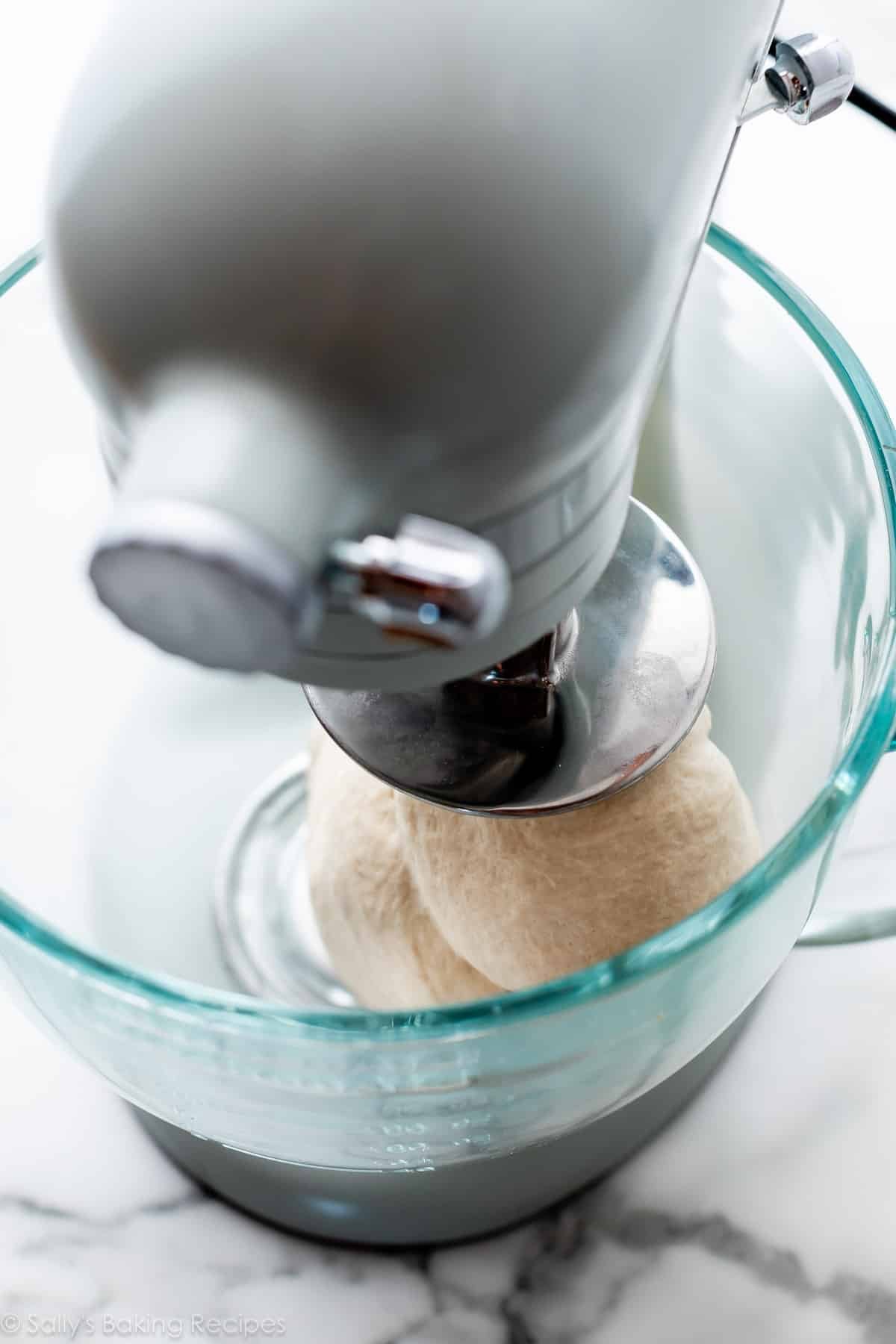

What Does Under-Kneaded Dough Look Like?
Dough that has not been kneaded, or hasn’t been kneaded long enough, appears lumpy, doesn’t stretch very well, and tears easily. If your dough is like this, it needs more kneading. Keep kneading it until it’s smooth, stretchy, and more pliable.
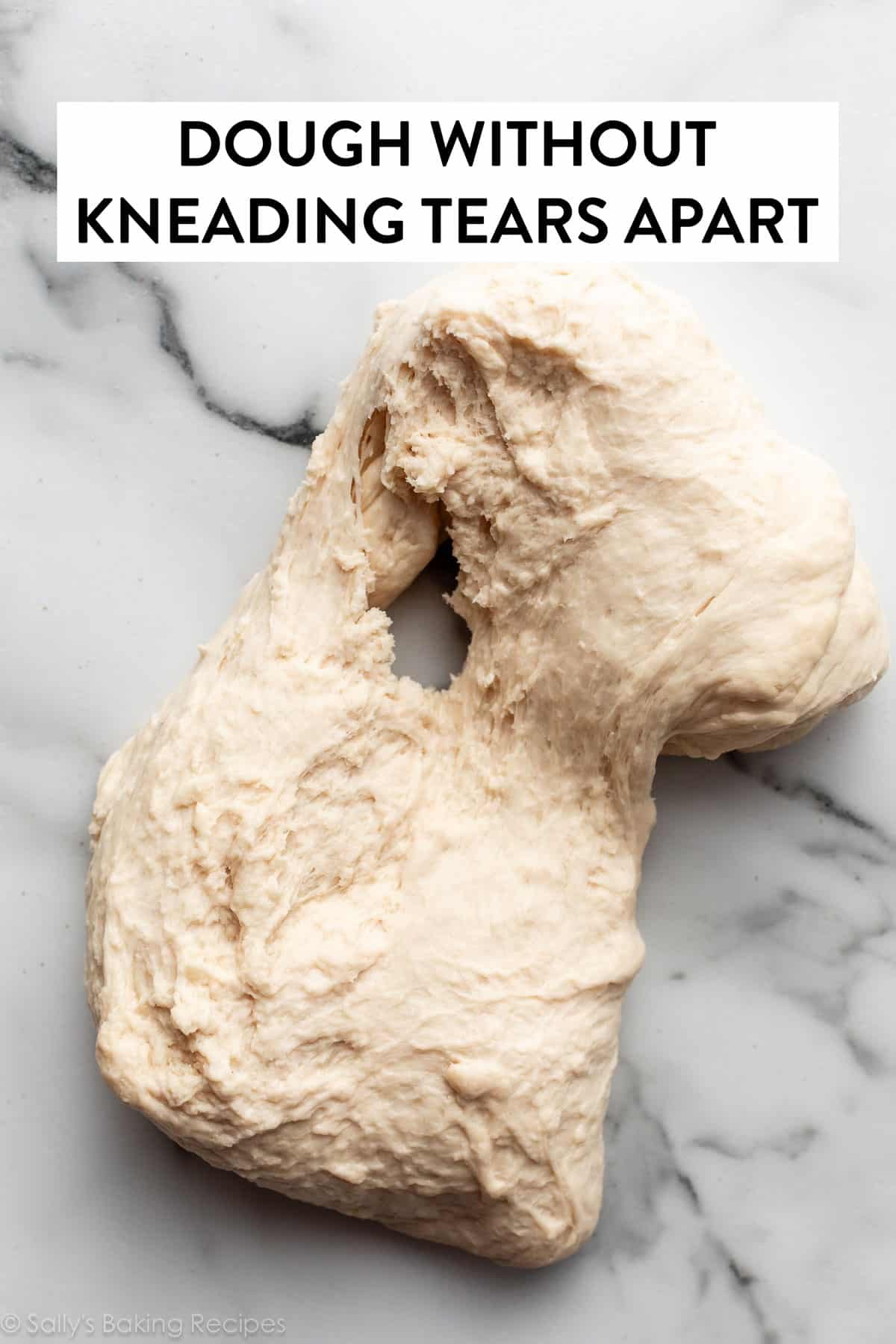

Obviously, kneading dough does take a little time, but the effort is well worth it, especially because you are already taking the time to make bread from scratch. I think you’ll find it’s actually one of the most enjoyable steps in bread-making (well, except for the smelling and tasting parts at the end). Silky smooth, stretchy and cushiony… kneading dough is the original stress reliever toy!
I hope this tutorial has been helpful. Use your new kneading knowledge to make my whole wheat bread if you haven’t already!
Check out 10 Tips for Vegan Baking here.
